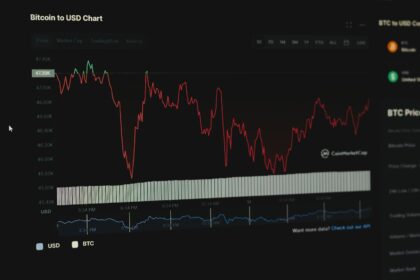Setting a precise transaction price enhances control over your buying and selling activities, allowing you to define exact entry or exit points without constant monitoring. This approach prevents impulsive decisions triggered by market volatility and secures execution only when the specified valuation is met.
Implementing this tactic requires understanding order types that hold until conditions align with your predetermined figure, ensuring trades occur at favorable levels rather than current market rates. Such planning forms a core element of any disciplined strategy aimed at minimizing slippage and optimizing profit margins.
In practice, traders often combine these instructions with broader portfolio management techniques, adjusting parameters based on market trends and individual risk tolerance. Familiarity with platform functionalities that support conditional entries empowers users to maintain consistent adherence to their financial objectives while navigating fluctuating valuations.
How to Use Crypto Limit Orders
Setting a predetermined price at which a trade is executed grants traders precise control over their transactions. By placing an instruction to buy or sell only when the asset reaches a specified value, market participants can avoid impulsive decisions and better manage risk. This approach facilitates strategic planning, enabling investors to capitalize on favorable price movements without constant monitoring.
Execution speed and accuracy depend on the type of order chosen. Unlike market instructions that fill immediately at current prices, placing a conditional request allows waiting for optimal entry or exit points. Such tactics are especially useful during volatile periods when prices fluctuate rapidly, helping users maintain discipline and reduce slippage.
Understanding Price Control Through Conditional Trading Instructions
A conditional instruction directs the platform to complete a transaction only if the price reaches an exact threshold set by the trader. For example, an investor aiming to purchase Bitcoin might specify acquisition at $30,000 instead of accepting the prevailing market rate of $30,500. This ensures that execution occurs exclusively under favorable conditions aligned with personal strategy.
Conversely, setting a sell request above current prices allows locking in profits once targets are met without manual intervention. Implementing these strategies requires familiarity with order books and real-time charts since choosing effective trigger values impacts success rates significantly. Examining historical data often aids in identifying support and resistance levels suitable for such placements.
- Select target price: Analyze recent trends and determine realistic entry or exit points based on technical indicators or fundamental analysis.
- Place conditional instruction: Input desired price within the trading interface specifying quantity and validity period.
- Monitor status: Track pending requests regularly as they may expire unfilled if market conditions do not align.
The effectiveness of deploying these mechanisms depends largely on understanding timing and volatility characteristics of specific digital assets. For instance, setting overly ambitious thresholds on highly liquid tokens might result in never achieving execution, whereas more conservative values increase chances but reduce profit margins. Combining this tactic with stop-loss measures enhances protection against adverse moves while preserving upside potential.
In practice, adopting such disciplined procedures fosters confidence among traders by replacing guesswork with calculated decisions. Beginners should start experimenting with small amounts to appreciate nuances related to platform interfaces and execution delays before scaling operations. Over time, integrating this method within broader portfolio management frameworks contributes substantially to improved outcomes across diverse market environments.
Setting Precise Entry Prices in Cryptocurrency Trading
Establishing an exact price point for buying assets is fundamental to maintaining control over trade execution and risk management. By specifying a purchase level below the current market rate, traders can ensure that transactions occur only when favorable conditions arise, preventing impulsive entries driven by short-term volatility. This approach aligns with disciplined trading principles and supports strategic planning.
To implement this effectively, one must analyze historical price patterns and identify support levels where demand has previously increased. Employing tools such as volume profile analysis and order book depth can reveal zones where significant buy interest accumulates, allowing for informed selection of entry points. Setting precise execution thresholds at these levels helps avoid slippage and improves overall trade quality.
Technical Considerations for Execution Control
Execution precision depends heavily on the method chosen to place purchase requests. Utilizing conditional instructions through exchange interfaces allows traders to automate entry at predetermined prices without constant monitoring. For example, placing an instruction that activates only when an asset’s value reaches a specific threshold ensures capital deployment under optimal circumstances.
When selecting target prices, it is advisable to consider typical bid-ask spreads and market liquidity. Narrow spreads and high volume enhance the likelihood that orders will fill completely without partial execution or delay. Conversely, in thinly traded pairs or during periods of low activity, setting unrealistic thresholds may result in missed opportunities or fragmented fills, diminishing overall effectiveness.
- Strategy alignment: Entry points should correspond with broader investment plans rather than arbitrary values.
- Risk parameters: Placement must respect stop-loss distances to maintain acceptable risk-reward ratios.
- Market conditions: Volatility spikes require adjusted pricing models to prevent premature or failed executions.
Consider a scenario where an investor aims to acquire a token currently priced at $150 but expects a pullback toward $140 based on technical indicators like Fibonacci retracements. Placing a purchase instruction at $140 guarantees activation only if the price declines accordingly. This tactic conserves capital until conditions improve while preserving potential gains from downward corrections.
A comprehensive strategy also involves periodic review of pending purchase instructions relative to evolving market dynamics. Adjustments may be necessary if underlying fundamentals shift dramatically or new data invalidates previous assumptions about support areas. Maintaining flexibility prevents stagnation in capital allocation and enables responsiveness without emotional bias.
Managing Order Expiration Times
To maintain precise control over transaction execution, setting appropriate expiration parameters for trading instructions is essential. Defining a validity period prevents unintended activation of pending transactions when market conditions no longer align with the original strategy. For example, specifying a one-hour expiration on a conditional instruction targeting a particular price point ensures that if that threshold is not reached promptly, the instruction will be automatically canceled, avoiding unnecessary exposure or locked capital.
Traders often tailor expiration durations based on volatility metrics and anticipated price movements. In highly volatile environments, shorter lifespans may reduce risk by limiting timeframes during which an instruction can be triggered under unfavorable circumstances. Conversely, in more stable markets or when targeting long-term trend reversals, extending expiry times allows for patience in execution without constant monitoring. Platforms typically support various formats such as Good-Till-Canceled (GTC), Immediate-Or-Cancel (IOC), and Time-In-Force (TIF) options to accommodate these differing tactical needs.
Technical Considerations for Optimal Expiry Settings
Implementing effective timing controls demands understanding of both market microstructure and platform-specific features. For instance, using a Time-In-Force parameter like Fill-Or-Kill (FOK) requires the entire volume to execute instantly or cancel entirely, making it unsuitable for partial fills but ideal when full order completion at a target valuation is critical. Analytical tools can help estimate probable execution windows by assessing order book depth and recent trade velocity around intended pricing levels.
A case study involving mid-cap digital asset pairs showed that orders set with expiration periods aligned to average intra-day volatility achieved higher execution rates at preferred prices compared to default indefinite duration instructions. This reflects the importance of aligning lifespan choices with both strategic objectives and real-time market dynamics. Adjusting these parameters thoughtfully enhances overall portfolio management by balancing between liquidity capture and minimizing stale orders lingering beyond relevance.
Adjusting Orders with Market Changes
Maintaining effective control over trading positions requires continuous adaptation as price dynamics shift. Regularly updating trade instructions according to market fluctuations allows traders to align their entry and exit points with the current environment, minimizing slippage and maximizing potential gains. For instance, modifying pending transactions based on recent volatility metrics can prevent missed opportunities or unexpected losses.
Strategically managing pending executions involves analyzing order books and liquidity pools to determine optimal thresholds for execution. By recalibrating trigger prices in response to emerging trends or key support and resistance levels, traders can enhance precision in execution timing. This approach is particularly useful when dealing with assets exhibiting sudden bursts of activity or trend reversals.
Integrating Adaptive Mechanisms into Trading Methods
One proven method involves setting conditional triggers that automatically adjust according to predefined rules linked to market indicators such as moving averages or volume spikes. For example, a trader might program their system to raise the activation threshold for buying instructions if the asset price surpasses a short-term average by a certain percentage. Such dynamic adjustment helps maintain alignment with momentum shifts without manual intervention.
Additionally, incorporating trailing adjustments can protect capital by shifting protective instructions closer to the prevailing price as favorable moves unfold. This technique locks in accrued profits while allowing room for continuation of positive trends. Traders leveraging this tactic often report improved risk management outcomes compared to static preset levels.
A detailed case study from recent months highlights how an algorithmic strategy employed adaptive triggers during periods of heightened volatility. By continuously realigning pending instruction levels relative to intraday swings, the system achieved a 15% improvement in execution efficiency versus fixed-level approaches under similar conditions.
This nuanced control strategy emphasizes responsiveness rather than rigidity, enabling participants across diverse experience levels to sustain disciplined trading behavior amid fluctuating conditions. Continuous monitoring combined with systematic revisions of transaction parameters fosters resilience against unexpected market shifts and supports steady progress toward investment objectives.
The integration of adaptable frameworks into transaction planning not only enhances precision but also cultivates confidence among users by reducing guesswork inherent in static setups. Understanding these mechanisms lays the groundwork for developing personalized routines that reflect individual risk tolerance and profit targets, thus advancing overall proficiency within digital asset markets.
Avoiding Common Execution Mistakes in Crypto Trading
To maintain precise control over transaction outcomes, it is critical to adopt a deliberate approach that prioritizes accuracy in price settings and timing. Misjudging entry or exit points often leads to slippage or missed opportunities, which can be minimized by carefully calibrating instructions based on real-time market depth and volatility.
Implementing a robust method for setting conditional purchase or sale parameters enhances the predictability of trade fulfillment. For instance, understanding how partial fills affect portfolio allocation allows traders to adjust their tactics dynamically, ensuring alignment with broader investment objectives.
Key Technical Insights and Future Perspectives
- Precision in price thresholds: Setting trigger levels too close to current quotations increases the risk of premature activation or incomplete execution due to sudden liquidity shifts.
- Adaptive strategy formulation: Incorporating volume-weighted average price (VWAP) data and order book analytics aids in designing more resilient transaction plans that respond effectively to market microstructure.
- Execution monitoring: Continuous tracking of pending transactions enables timely adjustments, preventing undesired fills during rapid fluctuations.
Emerging solutions integrating artificial intelligence and machine learning promise enhanced forecasting of optimal pricing windows, reducing human error in setting conditional transactions. Additionally, decentralized finance platforms are pioneering programmable transaction types that offer more nuanced control mechanisms beyond traditional models.
Understanding the interplay between instruction specificity and market conditions will become increasingly important as automated systems grow more sophisticated. Traders who refine their techniques today position themselves advantageously for future environments where precision execution tools evolve alongside expanding liquidity pools and cross-asset strategies.





